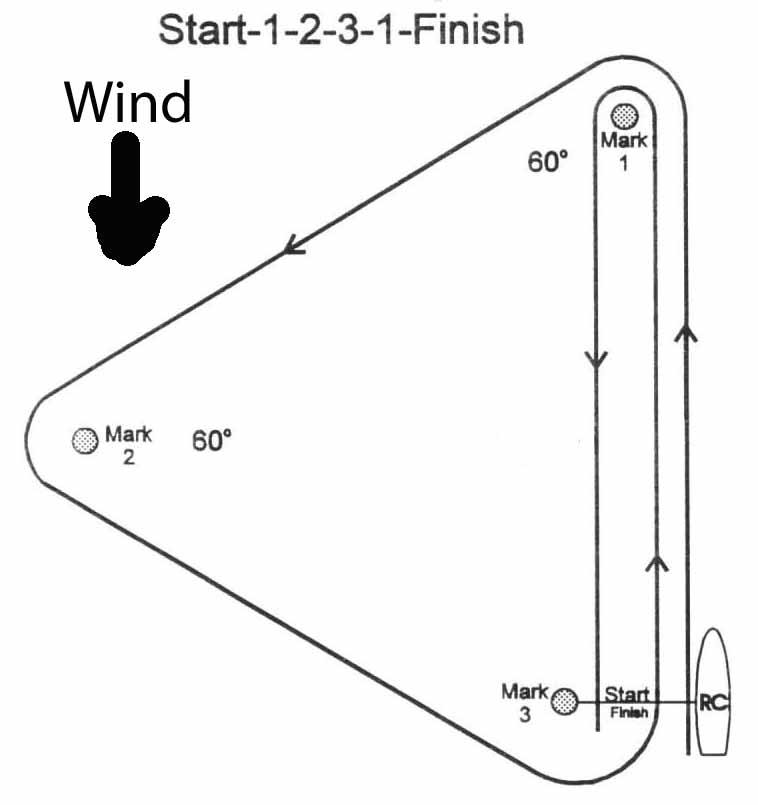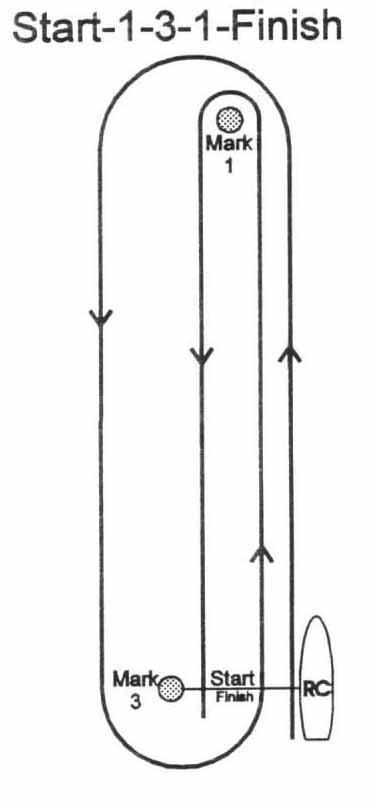1. RULES
1.1 The regatta will be governed by the ‘rules’ as defined in the The Racing Rules of Sailing.
1.2 Each participating skipper shall be a member of the Manitoba Sailing Association.
2. NOTICE TO COMPETITORS
Notices to competitors will be posted on the official notice board located in the lower Clubhouse.
3. CHANGES IN SAILING INSTRUCTIONS
Any change to the sailing instructions will be posted at the club and/or on this website before 1200 on the day it will take effect, except that any change to the schedule of races will be posted on the race blog two weeks before it will take effect.
4. SIGNALS MADE ASHORE
4.1 Signals made ashore will be displayed at the Club staff on the grounds.
4.2 When flag AP is displayed ashore, ‘1 minute’ is replaced with ‘not less than 15 minutes’ in the race signal AP.
5. SCHEDULE OF RACES
5.1 The schedule of races is listed on the FSC website in the racing blog.
5.2 The race officer on duty may run up to five races in a day.
5.3 The scheduled time of the warning signal for the first race each day is 1300.
5.4 At least three boats must start in a race for that race to be counted towards the Championship.
6. THE COURSES
6.1 The diagrams in the chart “Basic Course Layout” show the courses, including the approximate angles between legs, the order in which marks are to be passed, and the side on which each mark is to be left.
6.2 The race officer on duty will tell each participant which course to follow. Initial instructions will be communicated in person on shore, and the race officer will call out any changes before a start sequence on the water.
7. MARKS
7.1 Marks will consist of large, inflated cylinders and/or tetrahedrons.
7.2 Smaller plastic containers may be used as the starboard end, or “boat end” of the start line.
8. THE START
8.1 Races will be started by using rule 26 with the warning signal given 3 minutes before the starting signal, and the preparatory signal given 2 minutes before the starting signal, unless otherwise specified by the race officer on duty.
8.2 The starting line will be between two marks if the race officer is starting the race from a racing sailboat. If the race officer is starting the race from an anchored committee boat, it will be between the staff displaying the ‘RC’ flag on the committee boat at the starboard end and the port-end s t a r t i n g mark.
8.3 A boat starting later than 3 minutes after her starting signal will be scored ‘Did Not Start’. This changes Rule A4.
9. THE FINISH
The finishing line will be between two marks if the race officer is running the race from a racing sailboat. If the race officer is starting the race from an anchored committee boat, the finishing line will be between the staff displaying the ‘RC’ flag on the committee boat and the finishing mark.
10. PROTESTS AND REQUESTS FOR REDRESS
10.1 Protest forms are available in the lower clubhouse. Protests shall be delivered there within the protest time limit.
10.2 For each class the protest time limit is 30 minutes after the last boat has finished the last race of the day.
10.3 Notices will be posted within 30 minutes of the protest time limit to inform competitors of hearings in which they are parties or named as witnesses. Hearings will be heard in the lower clubhouse.
11. SCORING
11.1 The scoring system is as follows: The Low Point scoring system of Appendix A for “series longer than a regatta” (Rule A9) will apply to all races official club races completed in the year, of which 15 races will be required to be completed to constitute a series. A boat’s series score will be the total of her race scores, excluding her 16th best score and all those below it.
2. PRIZES
The Falcon Sailing Club Dinghy Championship Trophy will be awarded to the boat with the lowest score.
13. DISCLAIMER OF LIABILITY
Competitors
participate in the championship entirely at their own risk. See rule 4, Decision to Race.
The organizing authority
will not accept any liability for
material damage or personal injury or death sustained in conjunction with, prior to, during, or after the regatta.
COURSE LAYOUTS

WINDWARD / LEEWARD / TRIANGLE (GREEN COURSE)
The GREEN COURSE is set when conditions are such that the prevailing wind speed will provide for a reach averaging 5 knots or more.

WINDWARD/LEEWARD (BLACK COURSE)
The BLACK COURSE is set when the prevailing wind speed will NOT allow a reach of at least 5 knots.
PROTEST ETIQUETTE
Thanks to the introduction of the two-turn penalty (RRS 44), racers may settle a lot of their differences “out of court” so to speak. This saves time and grief and is effective. Few competitors realize, however, that this penalty rule is an option which only the ‘accused’ may exercise. The “plaintiff” has no alternative; he still has only ONE course of action.
We recommend the following on-the-water procedure:
1) Look after the safety of anyone or any boat affected by the incident. In most cases, that takes no time at all.
2) Inform the other boat at the first reasonable opportunity [rule 61.1(a)], i.e. inside of 30 seconds, of your intention to protest by hailing, simply “Protest!”
3) If your boat is 20′ long or more, display a red flag at the first reasonable opportunity after that, i.e. within the next 30 seconds max. If it is less than 20′ long go to #4 below.
4) Protect your position and keep on racing while keeping an eye on the alleged culprit to see whether he elects to do a 720.
Do not, under any circumstance, order or direct someone to “Do a 720!” and wait for him to do it. You could wait until the cows come home and accomplish nothing in the process. The rule book does not contain a single rule which allows you to assign penalties. If Suzanne tells you to do a 720, you could ignore her; she may keep on doing it long enough so that when she finally gives up and decides to lodge her protest properly, enough time will have elapsed that you should be able to prove her protest invalid for not respecting 61.1(a) which says “at the first reasonable opportunity”. Judges do not take kindly to competitors who take more than 60 seconds to signify their protest. Many use 30 secs!
CONCLUSION: When you’re the ‘plaintiff’, protest quickly and correctly. Your opponent should be impressed that you mean business. In a matter of just seconds, you can put the onus on him to either wait to hear you out after the race or, if he knows or suspects that he is wrong, get out of the way to do a 720.
When you’re the ‘accused’, you have three options:
1. You know you were in the wrong; do your 720 (Sportsmanship rule)
2. You’re not sure you were in the wrong
a. If his protest procedure is invalid (see above), ignore him
b. If his protest procedure is correct, decision time! ASAP do a 720 or take the risk of being disqualified from the race later.
3. If you were not in the wrong, carry on! You’ll see him in the protest room after the race … unless he has second thoughts … and elects not to lodge his protest!
(References to the masculine may be interpreted in the feminine, and reciprocally)
If you touch a mark, One-Turn (360) will suffice (RRS 44.1)
